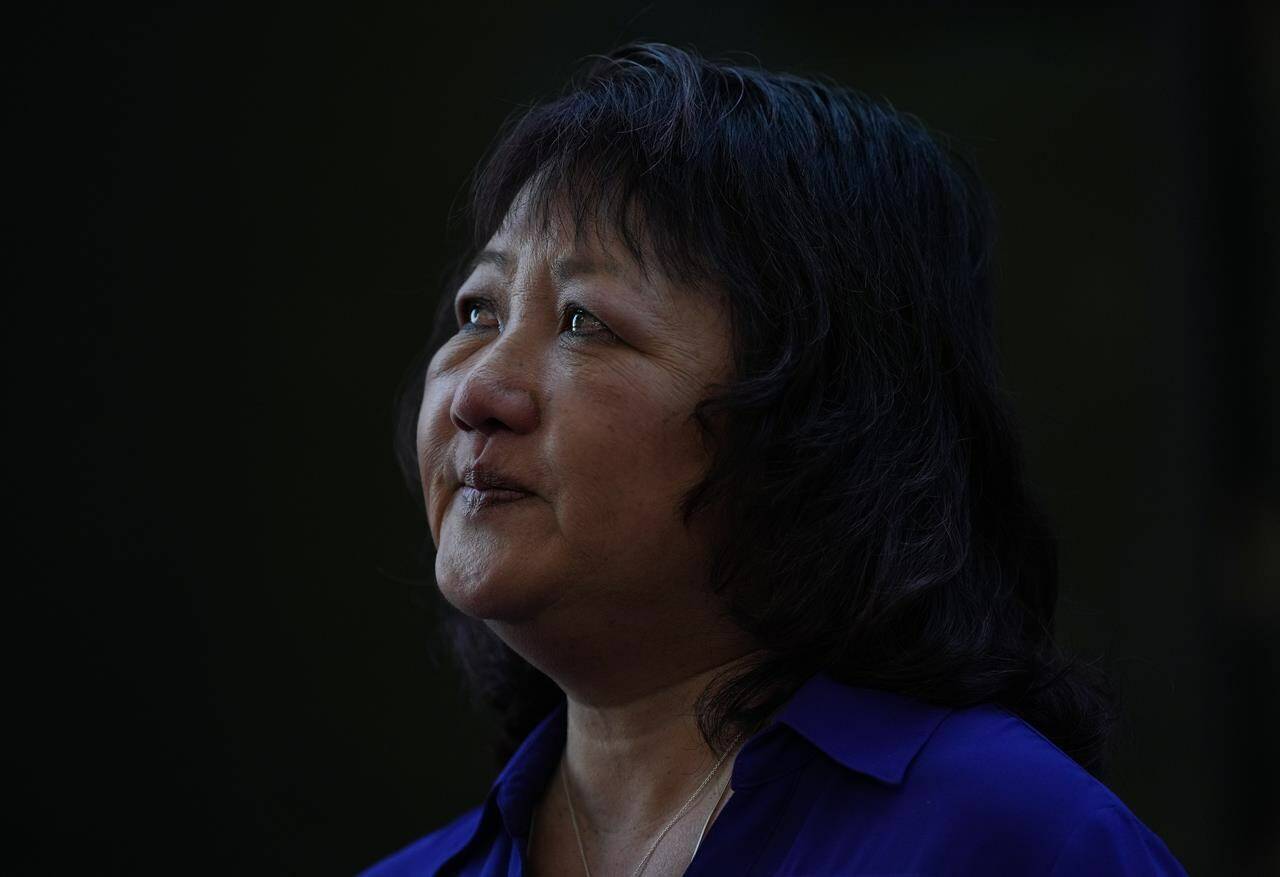The mother of a British Columbia teen who died by suicide after being targeted by online sextortion is pleading with federal lawmakers to pass a bill tabled in Parliament on Monday afternoon.
Carol Todd, whose daughter Amanda posted a video on YouTube detailing her ordeal before she died in 2012, says she worries that opposition parties will vote against the bill and wants them to communicate.
The Liberal government plans to create a new digital safety regulator to compel social-media platforms take action against online harms and remove damaging content — including sexually explicit content that victimizes minors and intimate images shared without consent — under penalty of millions in fines.
Justice Minister Arif Virani tabled the long awaited Online Harms Act on Monday, along with a suite of other amendments to the Criminal Code and and Canadian Human Rights Act.
Known as Bill C-63, the legislation ushers in the creation of a “Digital Safety Commission of Canada,” along with a new ombudsperson to advocate for users who have concerns about online safety.
Prime Minister Justin Trudeau has long promised to better protect Canadians, especially youth, from online harms — including a vow to table legislation within 100 days of his re-election in 2021.
In the years since, his ministers have repeatedly said that developing such legislation was complicated, as it needed to balance protecting freedom of expression with enhancing online safety for children.
The new bill covers the non-consensual sharing of intimate images, including deepfakes created by artificial intelligence, as well as content used to cyberbully, urge self-harm or incite violence, terrorism or hatred.
It seeks to give the new digital safety commission power to “order removal of content that sexually victimizes a child or revictimizes a survivor,” as well as intimate images shared without an individual’s consent
It says companies, which must generally abide by a “duty to act responsibly,” must remove such material within 24 hours.
Under the new bill, users could file a complaint with the platform itself or to the new regulator.
Government officials say companies would have the chance to evaluate such complaints, but failing to remove the material could make them subject to administrative fines or orders to do so.
Prime Minister Justin Trudeau said last week the idea is to make the internet safer for minors — not censor it for the rest of Canadians.
Trudeau had promised to bring forward the legislation within 100 days of winning the 2021 federal election, but failed to do so.
That year, the government released a consultation paper outlining the types of content it wanted to tackle, which experts roundly criticized for being overly broad.
They also said the government would risk violating the right to free expression because of a provision that would have given companies just 24 hours to remove material flagged as harmful.
A senior government source said last week the forthcoming bill proposes “two very narrow instances of a takedown” of online material: images of child sexual abuse and the non-consensual sharing of images.
The source, who had seen a draft of the legislation, spoke on condition of anonymity in order to discuss details that have yet to be made public.
Virani has said the government wants to target what is considered the most seriously harmful content online, which includes the sexual exploitation of children and content that incites violence and promotes hatred or violent extremism.
He is taking on an additional role to reflect the way the government is prioritizing the issue across the justice and heritage departments — minister of state for online harms.
Todd said in an interview Monday that it is frustrating not to have seen federal legislation guarding against online sextortion and cyberbullying earlier.
But she said: “Sometimes you have to wait for something good.”
She pointed to how similar laws already exist in the European Union, the United Kingdom and Australia.
Canada cannot afford to wait for such legislation, which may save many lives from the increased prevalence of cyberbullying and sextortion, Todd said.
“It’s the lives of our kids,” she said.
“I’m talking about everyday life, and just something that happens online — that can happen in a split second — can make a young person spiral so deeply.”
She said she is hopeful that the legislation becomes another part of Amanda’s legacy. Her YouTube video helped many parents and youth to have important conversations about protecting themselves in an online setting, she said.
“Amanda’s legacy continues to live on, and I think that it’s a teaching experience for all of us,” added Todd.
“And if she were watching from wherever, she would be proud of that.”
Federal NDP Leader Jagmeet Singh has called on Trudeau for weeks to introduce the long-awaited bill, pointing to the case of 12-year-old Carson Cleland of Prince George, B.C.
Last October, police said he was found with a self-inflicted gunshot wound after his family said he had fallen victim to online sextortion.
Conservative Leader Pierre Poilievre has signalled his opposition to online harms legislation, saying he believes Trudeau is going to target online speech.
“This is very important legislation,” government House leader Steven MacKinnon said at a news conference on Monday. “The government has worked on it for a long, long time.”
He said many parents know the dangers posed to children, and he thinks “any responsible government has to act.”
READ ALSO: Rise in online child abuse prompts call for new law forcing removal of harmful images
READ ALSO: Amanda Todd’s mom praises Dutch court for imposing max sentence on tormentor

